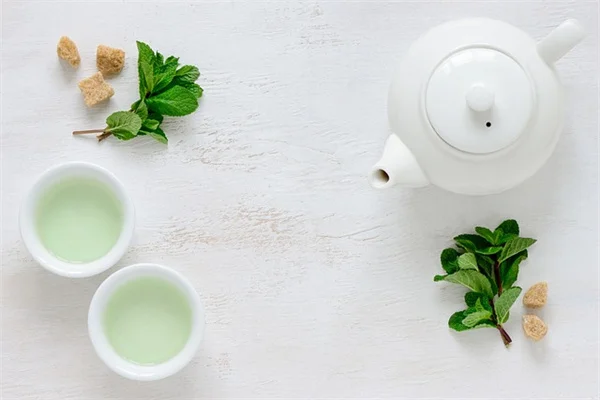5-Minute Workout Hack: How Short Bursts of Exercise Lower Blood Pressure Fast
Can just 5 minutes of exercise really lower your blood pressure? The answer is yes! New research shows that adding short bursts of vigorous activity like stair climbing, cycling, or running to your daily routine can make a measurable difference in your blood pressure readings. Here's the exciting part: while 5 minutes shows mild improvements, bumping it up to 10-20 minutes delivers clinically meaningful results that could reduce your heart disease risk by 10%.We've all heard we should exercise more, but who has time? That's what makes this study so groundbreaking - it proves you don't need hours at the gym to see benefits. As Dr. Blodgett explains, The good news is that whatever your physical ability, it doesn't take long to have a positive effect on blood pressure. Whether you're squeezing in a quick stair climb at work or biking to the store, these everyday activities add up to better heart health.In this article, we'll break down exactly how much exercise you need, which activities work best, and simple ways to sneak more movement into your busy day. You'll discover why your mad dash to catch the bus counts toward your health goals and how to track your progress. Let's get your heart pumping!
E.g. :Glioblastoma: New Treatments & Hope for Brain Cancer Patients
Advertisement
- 1、Why Just 5 Minutes of Exercise Can Make a Big Difference
- 2、How Exercise Works Its Magic on Your Blood Pressure
- 3、Making Exercise Work for Your Busy Life
- 4、Beyond Exercise: Other Ways to Support Healthy Blood Pressure
- 5、Putting It All Together: Your Action Plan
- 6、The Hidden Benefits of Short Exercise Bursts
- 7、Debunking Common Exercise Myths
- 8、Exercise Hacks for Different Lifestyles
- 9、The Ripple Effects of Small Changes
- 10、Overcoming Mental Blocks
- 11、FAQs
Why Just 5 Minutes of Exercise Can Make a Big Difference
Small Changes, Big Impact
You know that feeling when you're running late but decide to take the stairs anyway? Turns out, those little bursts of activity add up! New research shows that adding just 5 minutes of vigorous exercise to your day - like cycling, running, or stair climbing - can help lower blood pressure.
Here's the exciting part: while 5 minutes shows mild improvements, bumping it up to 10-20 minutes delivers clinically meaningful results. Imagine - in the time it takes to watch half a sitcom episode, you could be doing something great for your heart health. The study found replacing sedentary time with exercise lowered systolic blood pressure by 0.68 mmHg and diastolic by 0.54 mmHg. That might not sound like much, but here's why it matters:
| Blood Pressure Reduction | Heart Disease Risk Reduction |
|---|---|
| 2mmHg (SBP) | 10% lower risk |
| 1mmHg (DBP) | 10% lower risk |
What Counts as Vigorous Activity?
Ever wonder why you're out of breath after climbing a few flights of stairs? That's your body telling you it's working hard! The study focused on activities that really get your heart pumping:
- Running (even short bursts count!)
- Cycling (to work or for fun)
- Stair climbing (your office building is basically a free gym)
- Fast walking (power walking counts too!)
Here's a fun fact: the researchers included all exercise-like activities in their study. That means your mad dash to catch the bus totally counts toward your daily exercise goal!
How Exercise Works Its Magic on Your Blood Pressure
 Photos provided by pixabay
Photos provided by pixabay
The Science Behind the Sweat
Why does exercise help lower blood pressure? It's like giving your heart and blood vessels a workout at the gym. When you exercise regularly, your blood vessels become more flexible and efficient at delivering oxygen. This means your heart doesn't have to work as hard to pump blood through your body.
Think of it this way: if your blood vessels were highways, exercise would be the construction crew widening the lanes and smoothing out the potholes. The result? Less traffic (blood pressure) and happier drivers (your organs)!
But Wait - How Much Exercise Do You Really Need?
Here's where it gets interesting. While the study shows benefits from just 5 extra minutes, experts still recommend aiming for 30 minutes of aerobic exercise daily. Why the difference?
The 5-minute findings are great news for people who aren't exercising at all - it shows that every little bit helps. But if you're already active, pushing yourself a bit longer (like adding those extra 10-20 minutes) gives you even better results.
Here's a quick comparison of different activity levels and their benefits:
- Sedentary: Sitting most of the day (not great for blood pressure)
- 5 minutes vigorous: Small but measurable improvements
- 10-20 minutes: Clinically meaningful changes
- 30 minutes: Ideal for maintaining healthy blood pressure
Making Exercise Work for Your Busy Life
Creative Ways to Sneak in More Activity
Don't have time for the gym? No problem! Here are some real-world ways to get those extra minutes in:
- Park farther away at the grocery store (bonus: you'll always find a spot!)
- Take the stairs instead of the elevator (your coworkers will think you're crazy at first, then inspired)
- Do a 5-minute dance party while making dinner (your family might join in)
- Walk during phone meetings (no one will know you're pacing your living room)
Remember that study participant who averaged just 16 minutes of exercise daily? That's less time than most people spend scrolling social media! Which makes you wonder - could you swap some screen time for movement time?
 Photos provided by pixabay
Photos provided by pixabay
The Science Behind the Sweat
Here's some good news: you don't have to become a marathon runner to see benefits. The key is finding activities you actually enjoy. Love music? Try dancing. Enjoy nature? Go for walks. Competitive? Join a recreational sports league.
The best exercise is the one you'll actually do consistently. As Dr. Chen points out, "It is encouraging to see measurable changes in blood pressure with just a few minutes of exercise, something that can be incorporated into even a busy schedule."
Beyond Exercise: Other Ways to Support Healthy Blood Pressure
Lifestyle Factors That Make a Difference
While exercise is powerful, it's not the only way to support healthy blood pressure. Think of these as bonus points for your heart health:
- Sleep: Your blood pressure naturally dips during quality sleep
- Diet: Less processed food, more fruits and vegetables
- Stress management: Deep breathing, meditation, or whatever helps you relax
- Hydration: Water helps your blood flow more smoothly
Ever notice how everything seems harder when you're tired or stressed? Your cardiovascular system feels the same way! That's why taking care of your whole self matters for blood pressure.
When to Talk to Your Doctor
If you're dealing with high blood pressure or other health conditions, it's always smart to check with your doctor before starting new exercises. They can help you create a plan that's safe and effective for your specific situation.
Some people might need to avoid very intense activities at first, but nearly everyone can benefit from adding more movement to their day. As the researchers noted, "The good news is that whatever your physical ability, it doesn't take long to have a positive effect on blood pressure."
Putting It All Together: Your Action Plan
 Photos provided by pixabay
Photos provided by pixabay
The Science Behind the Sweat
Here's the bottom line: you don't need to overhaul your life overnight. Try adding just 5 minutes of vigorous activity to your day and see how you feel. Notice any difference in your energy? Your mood? Your ability to climb stairs without getting winded?
From there, you can gradually increase your activity level. Maybe next week you'll do 7 minutes. Then 10. Before you know it, you'll be hitting that 30-minute goal without even realizing it!
Tracking Your Progress
Want to see your improvements in action? Try this:
1. Take your blood pressure in the morning (many pharmacies have free machines)
2. Add 5 minutes of exercise to your day for a week
3. Check your blood pressure again after a week
4. Notice any changes? That's your body saying thank you!
Remember, the journey to better health isn't about perfection - it's about progress. Every minute you move counts, and your heart will thank you for each one.
The Hidden Benefits of Short Exercise Bursts
Your Brain on Exercise
Did you know those 5-minute exercise bursts do more than just help your heart? They supercharge your brain too! When you get moving, your brain releases feel-good chemicals called endorphins that act like natural painkillers and mood boosters. That's why you often feel happier after even a quick walk around the block.
Here's something fascinating - researchers at Stanford University found that walking increases creative thinking by an average of 60%. So next time you're stuck on a problem at work, try taking a brisk 5-minute walk instead of staring at your screen. You might just stumble upon the solution while moving your feet!
Exercise as Social Glue
Ever notice how people bond over shared physical activities? Those short exercise bursts can actually strengthen your relationships too. Think about it - when you take walking meetings with colleagues or play tag with your kids in the backyard, you're not just moving your body. You're creating memories and connections.
Here's a fun idea: start a "stair challenge" at work where everyone tracks their daily stair climbs. You'll be surprised how competitive people get about something so simple! Before you know it, your whole office will be healthier and more connected.
Debunking Common Exercise Myths
"No Pain, No Gain" is Nonsense
Who came up with this ridiculous saying anyway? The truth is, you don't need to push yourself to exhaustion to see benefits. In fact, those gentle 5-minute bursts of activity might be more sustainable long-term than intense workouts that leave you sore for days.
Think of exercise like seasoning food - a little goes a long way, and too much can ruin the experience. The key is finding that sweet spot where you feel energized, not wiped out.
The "I'm Too Old" Excuse
Here's some great news - age is no barrier to starting small with exercise. A study of nursing home residents in their 80s showed that just 5 minutes of daily chair exercises improved mobility and reduced falls. If they can do it, so can you!
Remember my 92-year-old neighbor Martha? She starts every morning with 5 minutes of gentle arm circles and leg lifts while watching the news. She swears it's the reason she still tends her garden every afternoon.
Exercise Hacks for Different Lifestyles
For the Office Worker
Stuck at a desk all day? Try these sneaky moves:
- Do calf raises while waiting for the printer
- Take "walking calls" around your building
- Set a reminder to stand and stretch every hour
- Have walking meetings with colleagues
Pro tip: Keep resistance bands in your desk drawer for quick arm exercises between emails. Your coworkers might laugh at first, but soon they'll be asking where they can get their own!
For Parents with Little Kids
Who has time for exercise when you're chasing toddlers? Actually, those little energizer bunnies can be your perfect workout partners!
- Turn playground time into fitness time (swings make great ab workouts)
- Have dance parties in the living room
- Carry your kids piggyback style for extra resistance
- Race them to the mailbox (prepare to be humbled by their speed)
Bonus: You're teaching your kids healthy habits without even trying. Double win!
The Ripple Effects of Small Changes
How 5 Minutes Can Change Your Whole Day
Ever notice how one good decision often leads to another? That morning walk might inspire you to choose a healthier lunch. Those few minutes of movement could give you the energy to tackle that project you've been putting off.
Here's a personal story: When I started taking 5-minute walking breaks at work, I not only felt better physically - I became more productive and even started sleeping better at night. Small changes really do create big waves!
The Community Impact
Imagine if everyone in your neighborhood added just 5 minutes of activity to their day. We'd have:
| Number of People | Collective Exercise Time |
|---|---|
| 100 people | 500 minutes (over 8 hours!) |
| 1,000 people | 5,000 minutes (83 hours) |
That's enough time to walk across several states! Now that's what I call people power.
Overcoming Mental Blocks
The "All or Nothing" Trap
Why do we think if we can't do 30 minutes, we shouldn't bother? That's like saying if you can't eat a whole salad, you might as well eat a whole pizza instead! Every bite - or in this case, every step - counts.
Next time you're tempted to skip exercise because you're short on time, ask yourself: "Would I rather do something small or nothing at all?" The answer is pretty obvious when you put it that way.
Making It Stick
The secret to lasting change? Make it so easy you can't say no. Here's how:
- Pair exercise with something you already do (like stretching during commercials)
- Start ridiculously small (even 1 minute counts)
- Celebrate every tiny victory (high five yourself!)
- Forgive slip-ups and just start again
Remember, it's not about being perfect - it's about being persistent. Those 5-minute investments will pay off big time in the long run.
E.g. :Exercise: A drug-free approach to lowering high blood pressure ...
FAQs
Q: How much can 5 minutes of exercise really lower blood pressure?
A: The study found that replacing sedentary time with just 5 minutes of vigorous exercise lowered systolic blood pressure by 0.68 mmHg and diastolic by 0.54 mmHg. While these numbers might seem small, here's why they matter: a 2mmHg reduction in systolic blood pressure translates to a 10% lower risk of heart disease. Think of it like compound interest for your health - small, consistent efforts add up to big benefits over time. The best part? These 5-minute bursts can be as simple as taking the stairs at work or doing a quick cycling errand.
Q: What types of exercise work best for lowering blood pressure?
A: The research specifically looked at activities that get your heart pumping - what experts call "vigorous" exercise. This includes running (even short bursts count), cycling (whether for fun or transportation), stair climbing (your office building is basically a free gym), and fast walking (power walking counts too!). The key is choosing activities that make you breathe harder and feel your heart working. As one researcher noted, "What's unique about our exercise variable is that it includes all exercise-like activities, from climbing the stairs to a short cycling errand."
Q: How does exercise actually lower blood pressure?
A: When you exercise regularly, your blood vessels become more flexible and efficient at delivering oxygen throughout your body. It's like giving your cardiovascular system a tune-up! Dr. Chen explains, "We know that physical activity directs our organs and tissue to undergo changes that improve their performance and efficiency." Essentially, exercise helps your heart and blood vessels work more effectively, so your heart doesn't have to pump as hard to circulate blood. This reduced workload translates to lower blood pressure readings both during and after physical activity.
Q: I hate exercising - are there easy ways to get these benefits?
A: Absolutely! The beauty of this research is that it shows everyday activities count. You don't need a gym membership or special equipment. Try parking farther from store entrances, taking walking breaks during work calls, or having a 5-minute dance party while making dinner. Even household chores like vigorous gardening can qualify. As the study authors emphasize, the goal is to replace sedentary time with movement - however you choose to do it. The best exercise is the one you'll actually do consistently, so find activities you enjoy.
Q: Should I still aim for 30 minutes of exercise if 5 minutes helps?
A: While the 5-minute findings are great news for people who aren't exercising at all, experts still recommend aiming for 30 minutes of aerobic activity daily for optimal heart health. Think of the 5-minute approach as a starting point - especially helpful for busy days. As you build the habit, gradually increase your activity level. The study showed that benefits become more significant at 10-20 minutes, with 30 minutes being the gold standard. Remember: some exercise is always better than none, and every minute you move counts toward better health!







